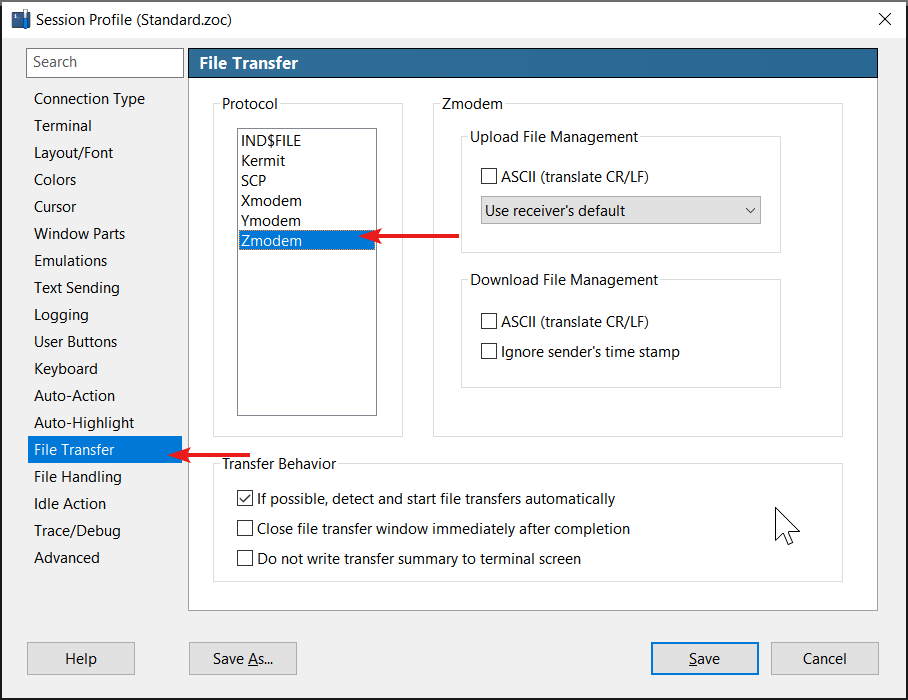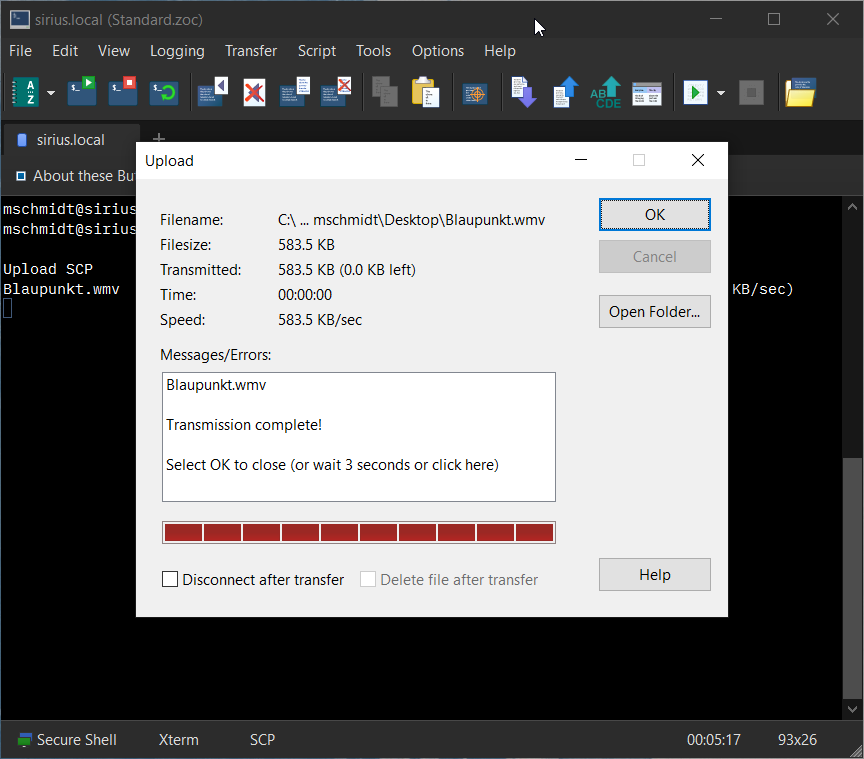Transfer Files via Zmodem Between ZOC Terminal and Remote Computers
This is a beginner-friendly tutorial. The article shows how to transfer files to a Linux server using ZOC Terminal.Table of Contents
- Introduction
- About Zmodem?
- Why Zmodem instead of SCP?
- Prerequisites
- Perform Zmodem File Transfer
- Conclusion
- Finally: Why Use ZOC Terminal Instead of PuTTY
Introduction
This article will show how to quickly transfer files to and from a Linux account to which you are already connected through ZOC Terminal.
While ZOC does support SCP for file transfers with Linux systems, this article will demonstrate how to use Zmodem to transfer files between your local machine and a remote Linux shell.
About Zmodem?
Zmodem is a file transfer protocol developed in the 1980s, designed to reliably transfer files over serial and network connections. It gained popularity for its speed, efficiency, and robustness in remote communications, especially over unreliable transmission paths.
Zmodem is available on a wide range of systems, including Unix/Linux (via rz/sz commands),
Windows, and embedded environments. It is supported by many terminal emulators, making it
a reliable choice even in modern workflows.
Why Zmodem instead of SCP?
Unlike SCP, Zmodem allows you to initiate file transfers directly from the shell using command-line input (no mouse required). Additionally, ZOC's Zmodem implementation provides options for handling file collisions, such as configuring whether or when existing files should be overwritten.
Prerequisites
To install ZOC Terminal, download it here. Installation is straightforward: During installation just go with the preselected values. If asked about your intended use, choose Access to Linux systems via SSH. Should you later decide that you do not like the software, it will offer a quick and clean uninstall.
On the Linux side, Zmodem is implemented through the
lrzsz package. Accordingly
you will need to install that package through the package manager of your
distribution, e.g. sudo apt install lrzsz on Unbuntu or Debian systems.
Alternately download and
compile the package yourself.
In ZOC Terminal make sure that Zmodem is the selected file transfer method. Check if the third field in the status bar shows Zmodem. Otherwise go to Options-menu→Edit Session Profile→File-Transfer, select Zmodem and click Save.

Perform Zmodem File Transfer
Once you are connected to the remote Linux computer (either through ZOC's Quick Connect
window or through the host directory) you can easily transfer files from your computer
to Linux or vice versa without the need for an external FTP/SCP software and without
the need to type complex scp commands.
Upload a File to Linux via Zmodem
- Choose Transfer-menu→Upload, select a file (or select multiple files using the Ctrl and Shift keys) and click Open.
- Alternately type
rzon the remote shell. This will open a file picker window on your computer where you can select one or multiple files to send. - Alternatively just drop a file from your Windows Explorer or macOS Finder into the terminal window
Download a File from Linux via Zmodem
On the remote shell type sz <filename>, e.g. sz ~/.ssh/id_rsa.pub
ZOC will then open the file transfer window and will receive the file in your configured download-folder (Options-menu→Program Settings→Folders).
Upload/Download Progress Window
In both cases, with uploads and with downloads, a file transfer window will appear which will show the progress and details of the transfer.
Easy huh?
Conclusion
Using ZOC Terminal lets you perform routine terminal tasks with ease. Using ZOC Terminal saves time and it also is more fun!
Finally: Why Use ZOC Terminal Instead of PuTTY
You can perform the above tasks with a free SSH client like PuTTY as well.
However, while PuTTY is a reasonable choice for to access Linux shells every now and then, ZOC Terminal is designed for ease of use and effectiveness day in and day out. It offers many features which can save you a lot time when performing routine tasks.
For example, as you saw, to upload a file, you can just drag a file from the desktop
into the ZOC terminal area. Receiving a file locally is as easy as typing sz <filename>.
These are just a few examples that demonstrate how using a professional ssh client like ZOC can save valuable time compared to free tools like PuTTY (which admittedly does cover the essentials quite well).

